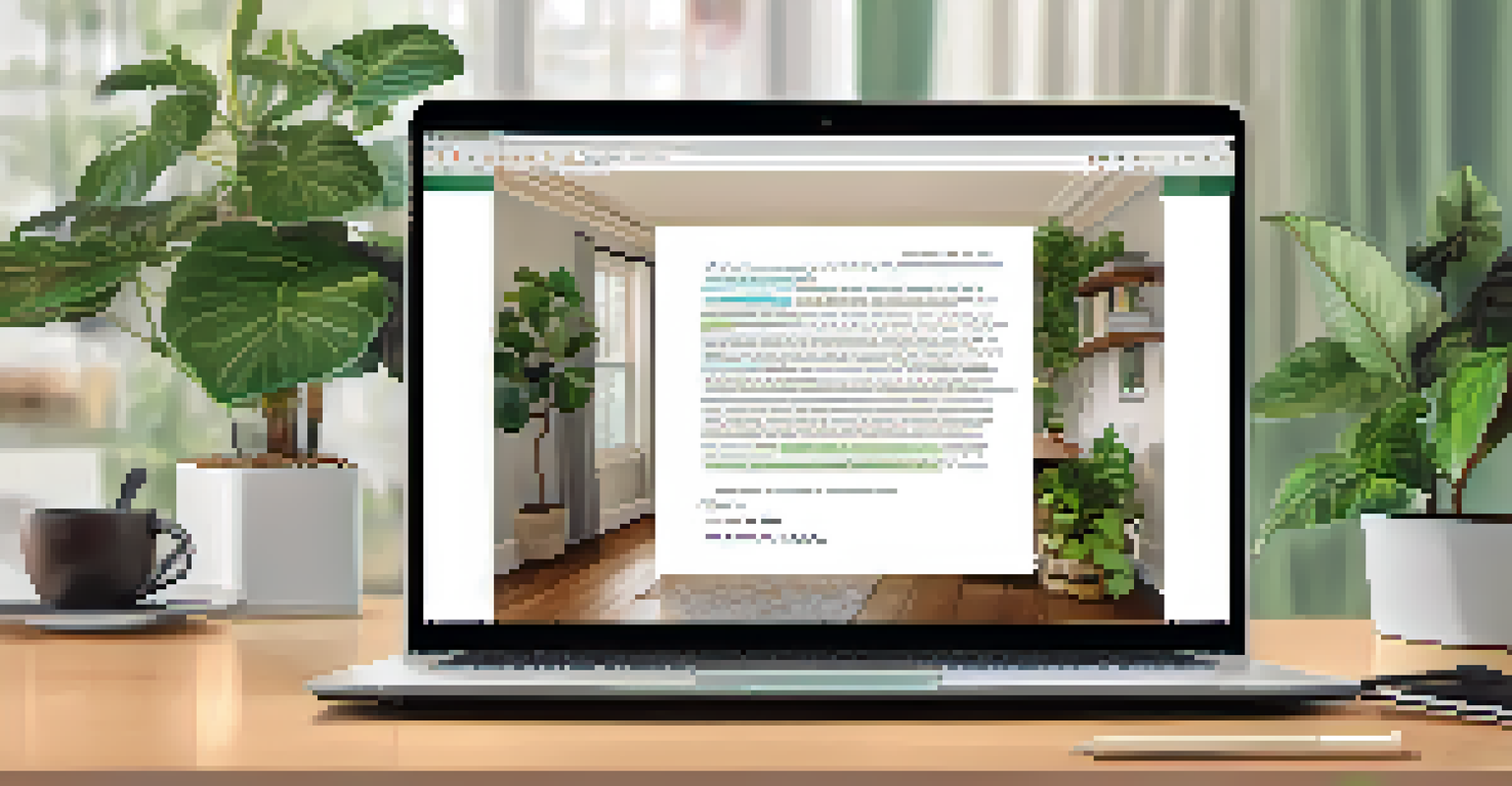The Importance of First Impressions in Networking Events

Understanding the Impact of First Impressions
First impressions are often formed within seconds of meeting someone, making them crucial in networking events. These initial perceptions can influence how relationships develop and opportunities unfold. Whether it's through body language, attire, or even a firm handshake, these details shape a person's view of you.
You never get a second chance to make a first impression.
Research indicates that a strong first impression can lead to lasting connections, while a negative one might close doors before they even open. Think of first impressions as the cover of a book; if it doesn’t catch your eye, you might not bother to read further. This is especially true in networking, where making a good impression can lead to future collaborations.
In today’s fast-paced world, where networking often happens in crowded rooms, the importance of making an immediate impact cannot be overstated. So, how can you ensure that your first impression is a positive one that sets the stage for fruitful relationships?
The Role of Body Language
Body language plays a pivotal role in conveying confidence and approachability during networking events. A warm smile, open posture, and steady eye contact can communicate friendliness and interest. Conversely, crossed arms or lack of eye contact can signal discomfort or disinterest, which could deter potential connections.

Consider the power of a genuine smile; it can instantly make you seem more approachable. When you engage with someone, your body language can encourage them to open up and feel comfortable. This rapport is essential, as it can lead to deeper conversations and connections.
First Impressions Matter
Initial perceptions can significantly influence networking opportunities and relationship development.
Moreover, being attuned to the body language of others can help you gauge their comfort level and adjust your approach accordingly. By reading these non-verbal cues, you can create a welcoming atmosphere that fosters meaningful interactions.
Choosing the Right Attire
Your attire at a networking event can significantly influence the first impression you make. Dressing appropriately for the occasion shows respect for the event and the people you’re meeting. Whether it’s business formal or smart casual, aligning your outfit with the event's vibe can set the right tone.
The way we communicate with others and with ourselves ultimately determines the quality of our lives.
Imagine attending an industry conference where everyone is dressed professionally, and you arrive in casual wear—this mismatch may raise eyebrows. On the flip side, if you dress to impress, you not only boost your confidence but also create a visual cue that you mean business.
Ultimately, your clothing choices should reflect both your personal style and the professional image you wish to project. Striking the right balance can enhance your credibility and encourage others to engage with you more readily.
Crafting Your Elevator Pitch
An elevator pitch is a succinct and persuasive speech that introduces yourself and what you do. In a networking setting, this brief introduction can be the difference between a fleeting conversation and a lasting connection. The key is to keep it concise yet impactful, ideally lasting no longer than 30 seconds.
Think of your elevator pitch as a movie trailer—just enough to entice your audience without giving everything away. Highlight your unique skills or experiences, and don’t forget to infuse a bit of personality to make it memorable. A well-crafted pitch can spark curiosity and encourage deeper discussions.
Body Language Speaks Volumes
Effective body language, such as a warm smile and open posture, can convey confidence and approachability.
Remember, the goal is to leave a lasting impression and invite further conversation. Your elevator pitch should not only inform but also engage, leaving your listener wanting to know more about you and your work.
Active Listening: The Key to Connection
Active listening is often overlooked but is essential in making a good first impression. It involves fully focusing on the speaker, understanding their message, and responding thoughtfully. When you genuinely listen, it shows respect and interest, which can significantly enhance your rapport with others.
Imagine discussing your latest project and noticing that the person you're talking to is distracted or uninterested; this can quickly dampen your enthusiasm. In contrast, when someone listens attentively, it not only validates your thoughts but also encourages a more engaging dialogue.
Practicing active listening can help you identify common interests and create a more meaningful connection. In networking, where relationships are built on trust and understanding, being an attentive listener can set you apart from the crowd.
Following Up: Keeping the Momentum Going
After a networking event, the first impression you made can continue to resonate through your follow-up. Sending a thoughtful message or email to those you met can reinforce your connection and keep the conversation alive. A simple thank-you note or a brief recap of your discussion can go a long way.
Think of it as planting a seed; your follow-up nurtures that initial encounter and allows it to flourish into a meaningful relationship. This is especially important in professional networking, where opportunities often arise from established connections.
Follow-Up Fuels Relationships
A thoughtful follow-up after a networking event can reinforce connections and nurture potential collaborations.
In addition to expressing gratitude, sharing relevant resources or insights can demonstrate your value and willingness to contribute. A proactive approach to follow-up can transform a fleeting interaction into a lasting professional bond.
The Long-Term Benefits of First Impressions
Making a positive first impression can have long-term benefits that extend well beyond the initial meeting. It sets the foundation for trust, respect, and collaboration, which are crucial in any professional relationship. Over time, these initial interactions can lead to opportunities for career advancement, partnerships, and mentorship.
Consider the idea of a network as a web; each positive interaction strengthens the threads that connect you to others. When you prioritize first impressions, you are essentially weaving a robust network that can support you throughout your career.

In essence, the effort you put into making a great first impression can yield dividends in the future. By investing in these initial moments, you’re setting yourself up for success and opening doors to new possibilities.